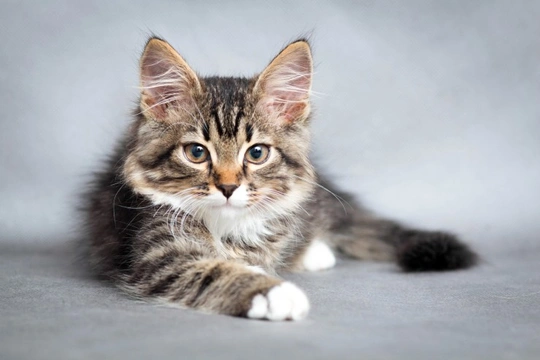
The five most common causes of allergies in cats
If your cat suffers from allergies, this can make them really miserable when they are flaring up, demonstrating a range of symptoms that are often similar to hayfever, such as a runny or blocked nose, irritation, sneezing and coughing, and itchy, runny eyes. As well as these obvious symptoms of something causing your cat unhappiness or discomfort, allergies can also produce a range of other symptoms as well, such as digestive upsets and sensitivity, dull, dry or itchy skin, and a general loss of condition.
Feline asthma is allergenic too, and this condition which can ultimately be serious and very restricting for your cat is caused by allergies, and so getting allergies under control or ideally, resolving them entirely can not only improve your cat’s quality of life, but even actually increase their lifespan.
Finding out the cause of your cat’s allergies is of course the first stage in resolving them and getting them under control, and yet this can be the most challenging part of the whole process, as allergies tend to come and go, lessen and worse, and generally, be rather elusive when it comes to diagnosis! Knowing a little bit about some of the most common allergenic triggers in cats can help you to know where to start when it comes to identifying them, and ergo, give yourself and your vet an advantage when it comes to treating or resolving them.
With this in mind, in this article we will look at the five most common causes of allergies in cats, and the substances and materials that are most likely to trigger them. Read on to learn more.
Food allergies
One of the most common and overriding allergenic triggers for cats are food allergies, but this covers such a huge potential range of things, it will not always get you much closer to a solution!
In some cases, simply trying out different complete foods and switching your cat’s diet around will enable you to get lucky and ease their symptoms, but you are rarely likely to get this lucky! When it comes to food allergies, cats can be allergic to virtually any individual ingredient or even more than one thing at a time, and so feeding your cat a grain free diet or a sensitivity diet that contains the bare minimum of different ingredients may help, but your vet may also need to run exposure tests too, in order to get the real root cause.
Flea allergies
Flea allergies and sensitivities in cats are a problem that rarely occurs all of a sudden or out of the blue. Generally, a cat that has been infested with fleas over a long period of time will develop a sensitivity to flea saliva, and ergo, when the flea bites them, they have a skin reaction to it.
Such allergies can only be resolved by eradicating fleas and protecting your cat against picking them up again in the future, and a flea allergy can be prevented entirely by ensuring that your cat does not develop one in the first place!
Grass or pollen allergies
Grass or pollen allergies can affect cats at any stage in their lives, and will come and go seasonally when plants are in full bloom. There is of course very little that you can do to stop pollen being spread during the spring and summer when everything is growing like mad, but you can restrict your cat to indoors only when the weather is very warm, keep plants outside of the house, and use an air purifier inside of the house to remove pollen spores from the air too.
Contact dermatitis
Contact dermatitis is a form of allergy that presents with symptoms of the skin and coat, and occurs when your cat comes into contact with something that they are sensitive or allergic to. It can be really hard to identify exactly what this allergen is as it can be virtually impossible to know and can be the most seemingly innocuous of objects! However, if your cat’s allergenic symptoms only really seem to affect their coat or skin, the chances are that they are suffering from a contact allergy, which can help to narrow down the potential cause.
Mould allergies
Finally, one of the most commonly overlooked allergenic triggers in household pets when it comes to hidden causes of problems is household black mould, which can lurk in the corners of rooms, behind the carpet lining or underneath the sink-virtually anywhere that damp or moisture collects. Even houses that are not generally very damp can develop black mould in the odd hard to spot location, and so if your cat has a mysterious gentle cough, is sneezing without any good reason or has a general wheeziness that does not come and go with the seasons and you are racking your brains as to why this might be, mould spores may be at the root of the problem.



